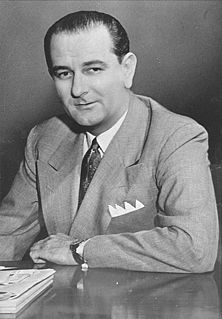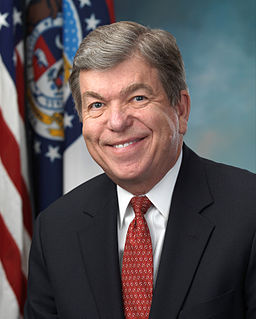
Elections to the United States Senate were held November 4, 2008 with 35 of the 100 seats in the Senate being contested. Thirty-three seats were up for regular elections; the winners were eligible to serve six-year terms from January 3, 2009 to January 3, 2015, as members of Class 2. There were also two special elections, the winners of those seats would finish the terms that ended January 3, 2013.

The United States Senate elections, 1970 was an election for the United States Senate, taking place in the middle of Richard Nixon's first term as President. The Democrats lost a net of three seats, while the Republicans and the Conservative Party of New York picked up one net seat each, and former Democrat Harry F. Byrd Jr. was re-elected as an independent.

The United States Senate elections of 1956 were elections for the United States Senate that coincided with the re-election of President Dwight D. Eisenhower. Although the Democrats gained two seats in regular elections, the Republicans gained back two seats in special elections, leaving the party balance of the chamber remained unchanged.

The United States Senate elections of 1950 occurred in the middle of Harry S. Truman's second term as President. As with most 20th-century second-term mid-terms, the party out of the Presidency made significant gains. The Republican opposition made a net gain of five seats, taking advantage of the Democratic administration's declining popularity during the Cold War and the aftermath of the Recession of 1949. The Democrats held a narrow 49 to 47 seat majority after the election. This became the first time since 1932 that the Senate Majority Leader lost his seat and the only instance where the majority leader lost his seat while his party retained the majority.

The United States Senate elections of 1946 were held November 5, 1946, in the middle of Democratic President Harry S. Truman's first term.

The 2008 United States Senate election in Kentucky was held on November 4, 2008. Minority Leader and incumbent Republican U.S. Senator Mitch McConnell won re-election to a fifth term. Although Barack Obama lost Kentucky by a 16.22% margin to John McCain in the presidential election which occurred simultaneously, McConnell narrowly kept his seat with a 5.94% margin against businessman Bruce Lunsford. This was a greatly reduced margin from when he won re-election in 2002 with a 29.4% margin.

The 1958 New York state election was held on November 4, 1958, to elect the Governor, the Lieutenant Governor, the State Comptroller, the Attorney General, a judge of the New York Court of Appeals and a U.S. Senator, as well as all members of the New York State Assembly and the New York State Senate.

The 2010 United States Senate election in Alaska took place on November 2, 2010, alongside 33 other U.S. Senate elections in other states, as well as elections in all states for Representatives to the U.S. House, and various state and local offices.
The United States Senate elections of 1872 and 1873 were elections which had the Republican Party, while still retaining a commanding majority, lose two seats in the United States Senate. By the beginning of the Congress, however, they'd lost three more: two as defections to the Liberal Republican Party, and one a resignation of Henry Wilson to become U.S. Vice President. These elections also coincided with President Ulysses S. Grant's easy re-election.
The United States Senate elections of 1880 and 1881 were elections that coincided with the presidential election of 1880, and had the Democratic Party lose five seats in the United States Senate. The newly elected Readjuster senator caucused with the Republicans, and the Republican Vice President's tie-breaking vote gave the Republicans the slightest majority. All of that changed September 19, 1881 when the Vice President ascended to the Presidency and the Senate became evenly-divided.

The 2016 United States Senate election in Arkansas was held November 8, 2016, to elect a member of the United States Senate to represent the State of Arkansas, concurrently with the 2016 U.S. presidential election, as well as other elections to the United States Senate in other states and elections to the United States House of Representatives and various state and local elections.

Early general elections were held in the Netherlands on 12 September 2012 after Prime Minister Mark Rutte handed in his government's resignation to Queen Beatrix on 23 April. The 150 seats of the House of Representatives of the Netherlands were contested using party-list proportional representation. The People's Party for Freedom and Democracy (VVD) received a plurality of the votes, followed by the Labour Party (PvdA).

The 2014 United States Senate election in Kansas was held on November 4, 2014, to elect a member of the United States Senate to represent the State of Kansas, concurrently with other elections to the United States Senate in other states and elections to the United States House of Representatives and various state and local elections.

Michael J. Dunleavy is an American politician who is the 12th governor of Alaska, serving since December 2018. A Republican, Dunleavy was a member of the Alaska Senate from 2013 through 2018. Dunleavy defeated former Democratic United States Senator Mark Begich in the 2018 gubernatorial election.

The 2016 United States Senate election in Kansas was held on November 8, 2016, to elect a member of the United States Senate to represent the State of Kansas, concurrently with the 2016 U.S. presidential election, as well as other elections to the United States Senate in other states and elections to the United States House of Representatives and various state and local elections. The primaries were held on August 2.

The 2016 United States Senate election in Missouri was held November 8, 2016, to elect a member of the United States Senate to represent the State of Missouri, concurrently with the 2016 U.S. presidential election, as well as other elections to the United States Senate in other states and elections to the United States House of Representatives and various state and local elections. The primaries were held August 2.

The 2016 United States Senate election in Vermont was held November 8, 2016, to elect a member of the United States Senate to represent the state of Vermont, concurrently with the 2016 U.S. presidential election, as well as other elections to the United States Senate in other states and elections to the United States House of Representatives and various state and local elections. The primaries were held August 9.

The 2018 United States Senate election in Arizona took place on November 6, 2018, to elect a member of the United States Senate to represent the State of Arizona and replace Senator Jeff Flake, who did not run for re-election. It was held concurrently with other elections to the United States Senate, elections to the United States House of Representatives, and various state and local elections.

The 2018 United States Senate election in Pennsylvania took place on November 6, 2018, to elect a member of the United States Senate to represent the State of Pennsylvania, concurrently with other elections to the United States Senate, elections to the United States House of Representatives, and various state and local elections. The primary elections were held on May 15.

General elections were held in Nigeria on 23 February 2019 to elect the President, Vice President, House of Representatives and the Senate. The elections had initially been scheduled for 16 February, but the Election Commission postponed the vote by a week at 03:00 on the original polling day, citing logistical challenges in getting electoral materials to polling stations on time. In some places, the vote was delayed until 24 February due to electoral violence. Polling in some areas was subsequently delayed until 9 March, when voting was carried out alongside gubernatorial and state assembly elections.




















